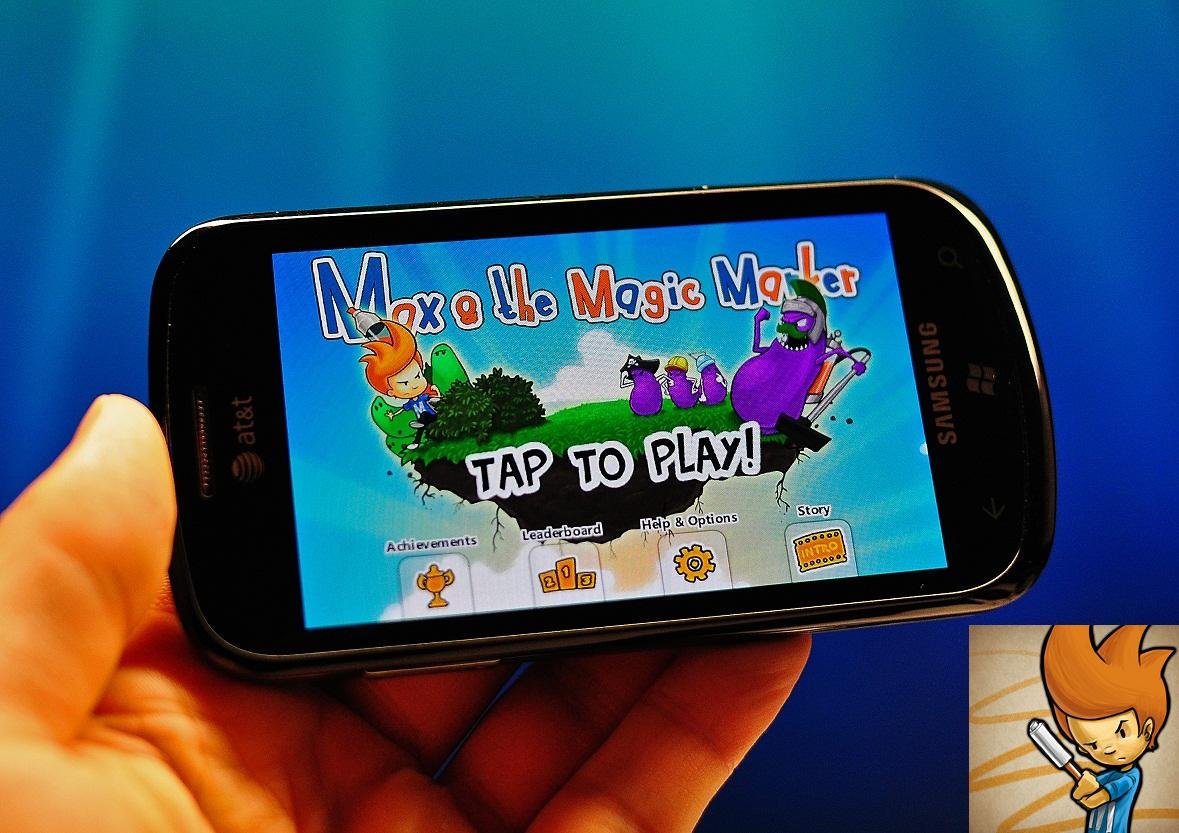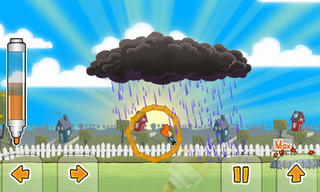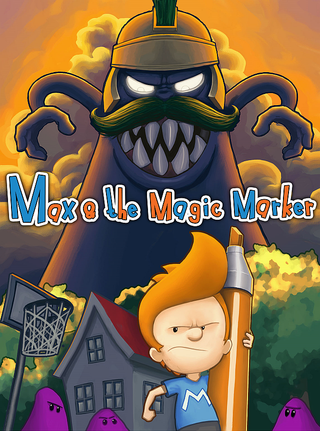Max & the Magic Marker - Review

Max and the Magic Marker, another WiiWare title ported to WP7, currently has the most positive user-submitted reviews that I've read from any of the games in the Xbox Live Arcade Marketplace. There's a really good reason for that. It's a great game with an appeal for a wide demographic. Youngsters will love the vibrant, imaginative gameplay and the cool characters. Cold-hearted cynics, like yours truly, will really get a kick out of the seamless combination of platforming and puzzle-solving mechanics that work phenomenally well with the little-big-kid heroics of the blissfully unfolding plot.
Read on to discover why Max deserves the hype and why the term 'magic marker' instead of just 'marker' became common vernacular.

One of Max's drawings has apparently sprung to life and is running around making a mess of things in the sketchy world of his own imagination. To put a fix to things Max decides to draw himself into his scribblings, armed with the just a Magic Marker and a keen ability to solve puzzles. Max and the Magic Marker is a basic platforming game with a heavy dose of physics-based puzzles. Both of these elements are executed brilliantly. Character interactions and control feel fluid, without the flighty touch or lightness that most touchscreen-controlled games suffer from.
Max is controlled in his world of drawings via left and right directional arrows and a jump button. He can interact with some boxes and planks and things by moving them via a grab button that appears when needed. Screen real estate in Max and the Magic Marker is designated, mostly, to actually looking at the game environment - a huge plus to newcomers to touch-screen games. This canvas sized view is also for drawing room. Players can draw objects directly into the game by dragging their finger across the screen. Once their finger leaves the screen the drawn object obeys the game's physics, like gravity.
Need a box to jump to a higher ledge? Just draw it on the ground where it's needed. Need a staircase? Draw it in. A bridge? A wall? A weight? Anything you can draw is at your disposal but you are limited to a very precise physics engine. Draw something in the sky and it will fall to the ground. Draw something in water and it will sink. You're also limited to the amount of ink contained in the Magic Marker. Max starts each level with an empty tank and collects it in bits and pieces throughout the game. Ink is used up while drawing but can also be reclaimed be erasing anything you don't need anymore. Once you get the hang of how the game uses drawing to overcome obstacles there won't be any puzzle you won't be able to solve.
The puzzles are both clever and difficult enough to be challenging without being overbearing and are introduced at a steady learning pace. Physics in Max and the Magic Marker go from typical teeter-totter learning to, "Woah, I've built a working flying machine." so quickly and easily and are so fun to mess around with that you won't want to end some levels. Really, Max and the Magic Marker is a near-perfect example of excellence in simplicity. Simple concept. Simple game-design. Nothing over the top - just the right amount of everything you need to not over do a great introductory WP7 game for just about every kind of gamer - casual to elite.

There are no amazing high scores to compete for here but there are time trials and hidden collectible items for each level. It's not mandatory or anything - just a trial to run or try out if you're competitive or like a good challenge. There are some minor perks for finding everything to collect in the game but they're hardly needed to make the game any bit more enjoyable. A great deal of my time was spent revisiting some of the 15 levels in order to find hidden tokens or attempt to beat the run-through time.
Get the Windows Central Newsletter
All the latest news, reviews, and guides for Windows and Xbox diehards.
The game is bright and vibrant both visually and audibly. The levels aren't very varied but they are constructed very well. There are three 'worlds' to sketch your way through, each made up of five levels. Typical platformer hazards abound - pitfalls, roaming baddies, falling bits, pokey spikes, and even some deadly water and rain. Max can only suffer one bit of damage before being transported back to the last checkpoint, of which there are many. Having to restart a difficult area isn't very stressful since there is always a checkpoint within a few steps.
I don't suspect the general audience will spend more than 8 hours playing Max and the Magic Marker and clever speed demons will have the game done and over with in under half that. Completionists will get the most bang for their buck. Hidden items can go anywhere from very easy to find to maddening. Be thankful that there is a tally at the end of each level letting you know how many you may have missed. Speed trials are rather forgiving for the first couple rounds but ramp up in difficulty rather abruptly toward the end.
Max and the Magic Marker is a just a little bit too short for $6.99 but it's made so well that it should be the first game every WP7 user purchases. It's slightly disappointing to see the levels fly by but the value in quality here makes up for quantity in spades.
Oh yes, I nearly forgot.
The term 'Magic Marker' became a colloquial term for any writing or marking instrument after the product marketed as 'Magic Marker' achieved complete and total market dominance. You know how most people will ask for a band-aid if they get a cut? No one is going to ask for an adhesive medical strip (that even sounds silly), they'll ask for the brand name of Band-Aid instead. In the early 50's a new writing product was developed that could write on nearly any type of surface. The inventor, Sydney Rosenthal, sold and marketed his new device under the brand name, "Magic Markers." The brand name became so popular and so widely used that it was assumed that any marker was a Magic Marker. Or so the story goes.

Daniel Rubino is the Editor-in-chief of Windows Central. He is also the head reviewer, podcast co-host, and analyst. He has been covering Microsoft since 2007 when this site was called WMExperts (and later Windows Phone Central). His interests include Windows, laptops, next-gen computing, and wearable tech. He has reviewed laptops for over 10 years and is particularly fond of 2-in-1 convertibles, Arm64 processors, new form factors, and thin-and-light PCs. Before all this tech stuff, he worked on a Ph.D. in linguistics, performed polysomnographs in NYC, and was a motion-picture operator for 17 years.